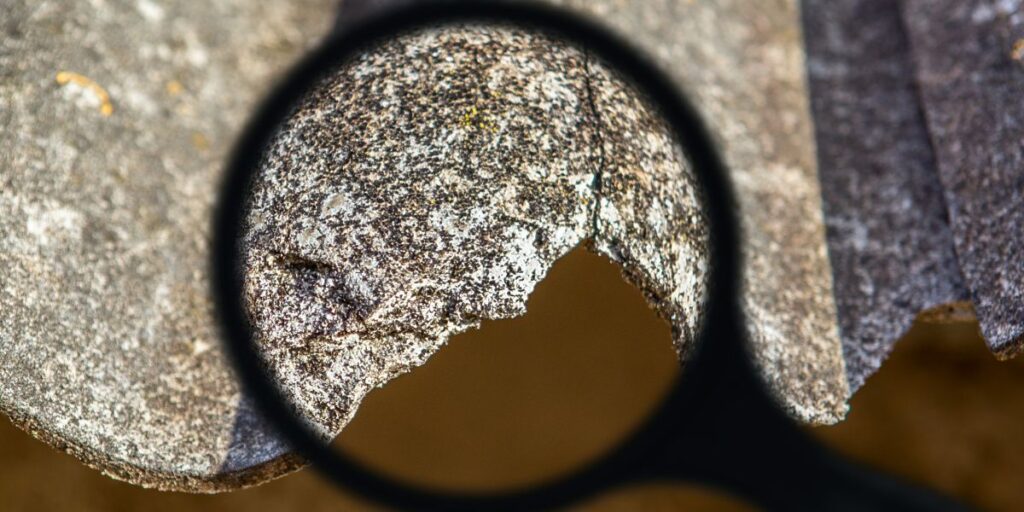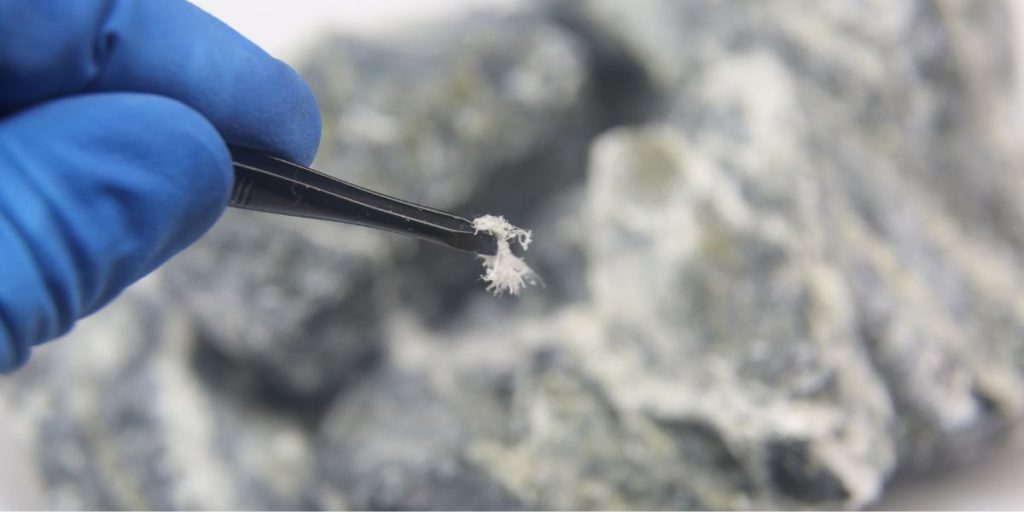Renovating your property is an exciting endeavour that can enhance its value and improve your living space. However, being aware of potential hazards such as asbestos-containing materials (ACMs) is crucial. In this informative blog, we will discuss how to determine if your renovation project involves the following:
- Disturbing ACMs.
- The importance of property inspections for asbestos.
- Options for renovating if your property contains asbestos.
- The significance of understanding scientific concepts related to asbestos removal

How do I know if my renovation project will involve disturbing asbestos-containing materials (ACMs)?
Before commencing any renovation work, it is crucial to evaluate whether your project might disturb ACMs. Asbestos was mainly used in building materials until the 1980s due to its fire-resistant and insulating properties. Some common areas where ACMs may be found include roofing materials, insulation, textured ceilings, floor tiles, and pipe insulation.
To determine the presence of ACMs, you should consider the age of your property. If constructed before the 1990s, it is more likely to contain asbestos. Also, suppose you notice damaged materials that appear fibrous or suspect asbestos-containing products. In that case, it is essential to treat them as potentially hazardous.
Do I need to have my property inspected for asbestos before starting a renovation?
To ensure the safety of occupants and workers during renovations, having your property inspected for asbestos is strongly recommended. Professional asbestos assessors are trained to identify and assess the condition of ACMs. They will conduct thorough inspections, sampling and analysing of suspected materials in accredited laboratories.
Property inspections for asbestos involve visual assessments, taking samples of suspected materials, and analysing them under a microscope. These inspections provide accurate information about the presence and condition of ACMs, allowing you to make informed decisions regarding your renovation plans.
If my property contains asbestos, what are my options for renovating?
If your property contains asbestos, it’s important to approach renovations cautiously. Here are some options to consider:
Encapsulation
This involves covering or sealing ACMs to prevent the release of asbestos fibres. Encapsulation is cost-effective when the ACMs are in good condition and not easily disturbed.
Enclosure
This method entails constructing an airtight barrier around the ACMs to prevent fibre release. The enclosure is suitable for ACMs that cannot be easily removed or encapsulated.
Removal
Complete removal of ACMs is the most effective method of eliminating the hazard. Licensed asbestos removal professionals should only carry it out to ensure safety and compliance with regulations.
When selecting a renovation option, it is crucial to consult with experienced asbestos removal professionals who can help you make the ideal decision based on the specific circumstances of your property.
Importance of Understanding Scientific Concepts in Asbestos Removal
Asbestos removal involves complex scientific concepts that require consideration. One such concept is the friability of asbestos, which refers to its tendency to crumble and release fibres into the air. Understanding the friability of different types of asbestos is crucial in determining the appropriate removal method.
Additionally, knowledge of airborne asbestos fibre concentrations is essential.
The Occupational Safety and Health Administration (OSHA) has established permissible exposure limits (PELs) for asbestos to protect workers and occupants from health risks. Compliance with these limits ensures a safe working environment during asbestos removal projects.
Safety From Asbestos is Key When Renovating
Renovating your property can be a rewarding experience, but it’s vital to prioritise safety, especially when dealing with potential asbestos-containing materials. By understanding the indicators of ACMs, conducting property inspections, and exploring appropriate renovation options, you can mitigate the risks associated with asbestos and ensure the well-being of everyone involved.
Remember to consult with professionals and adhere to established safety protocols throughout the renovation. If you suspect the presence of asbestos, it is crucial to halt any renovation activities and seek the assistance of a licensed asbestos professional. They have the skill and equipment to safely handle and remove asbestos-containing materials, minimising potential exposure.
Warning Do Not Disturb Asbestos
Ignoring or mishandling asbestos can have severe health consequences, including developing serious respiratory conditions like mesothelioma. Protect yourself and your loved ones by taking asbestos-related concerns seriously and following proper procedures. Remember, the health and safety of everyone involved should always be the main priority during any renovation project.
Can I legally remove asbestos myself during a renovation, or do I need to hire a licensed professional?
Removing asbestos-containing materials (ACMs) is a delicate process that requires expertise and adherence to safety guidelines. In Australia, the regulations regarding asbestos removal vary between states and territories. While it may be legal for homeowners to remove small amounts of non-friable asbestos, hiring a licensed professional for any asbestos removal tasks is highly recommended. Licensed professionals possess the necessary skills, knowledge, and specialised equipment to safely handle asbestos, minimising the risks to themselves and others.
What are the risks associated with renovating a property that contains asbestos?
Renovating a property that contains asbestos without proper precautions can lead to significant health risks. Asbestos fibres can become airborne and easily inhaled when disturbed, potentially causing serious respiratory diseases, including lung cancer and mesothelioma. The risks are particularly high during drilling, sanding, or demolishing materials containing asbestos. Even a small exposure to asbestos fibres can have long-term health implications, emphasising the importance of thorough risk assessment and appropriate safety measures during renovations.

Understanding the science behind asbestos
Thin, resilient fibres make up the naturally occurring material known as asbestos. Its heat resistance and insulating properties made it a popular building material until its ban in Australia in the 1980s. The two main types of asbestos are friable and non-friable. Friable asbestos is more hazardous as it can easily crumble into fine particles, while non-friable asbestos is bound within a matrix, making it less likely to release fibres unless disturbed.
Microscopic asbestos fibres can become airborne and inhaled when asbestos-containing materials are damaged or deteriorated. These fibres can lodge in the lungs, causing inflammation and scarring and potentially leading to the development of asbestos-related diseases over time. Asbestos-related diseases have a long latency period, often taking several decades to manifest.
Exploring differing opinions on asbestos removal
While hiring a licensed professional is widely recommended, there are differing opinions on whether homeowners can safely remove asbestos. Some argue that homeowners can effectively remove non-friable asbestos without professional assistance with proper training and precautions. However, it is critical to take into consideration the potential risks involved and the importance of thorough knowledge and expertise in handling asbestos.
During property renovations, it is crucial to prioritise safety when dealing with asbestos-containing materials. Hiring a licensed professional is the best course of action to ensure that asbestos removal is carried out safely and in compliance with legal requirements.
The risks associated with renovating a property that contains asbestos cannot be underestimated, as even minimal exposure to asbestos fibres can have severe health consequences. By understanding the science behind asbestos and following recommended guidelines, homeowners can protect themselves and their loved ones from the risk of asbestos exposure.
How can I minimise the risk of asbestos exposure during a renovation?
Taking the necessary precautions is crucial to minimise the risk of asbestos exposure during a renovation project. You can protect yourself, your family, and any workers involved by following the appropriate safety measures. Here are some steps to consider:
Conduct an Asbestos Assessment
Before starting any renovation work, it is essential to conduct an asbestos assessment. Hire a licensed asbestos assessor to identify and determine the presence of asbestos-containing materials (ACMs) on your property. This assessment will help you develop a comprehensive plan to manage asbestos risks during renovation.
Engage a Licensed Asbestos Removal Professional
If the asbestos assessment confirms the presence of ACMs, it is recommended to engage a licensed asbestos removal professional. They have the expertise to handle asbestos safely and follow proper procedures for removal and disposal. Professional removal ensures that asbestos exposure is minimised and all legal requirements are met.
Create a Safe Work Area
During the renovation, isolate the work area to prevent asbestos fibres from spreading to unaffected parts of the property.
Close off the area with a sheet of plastic and close all windows and doors. Mark the boundaries of the work area to prevent unauthorised access.
Use Proper Personal Protective Equipment (PPE)
Wear suitable personal protective equipment, such as disposable coveralls, gloves, respirators with high-efficiency particulate air (HEPA) filters, and safety goggles. This equipment helps minimise direct contact with asbestos fibres and prevents inhalation during the renovation process.
What regulations and guidelines should I follow when renovating a property that contains asbestos?
When renovating a property that contains asbestos, it is crucial to adhere to specific regulations and guidelines to ensure compliance and safety. Here are key considerations:
Local and National Regulations
Familiarise yourself with local and national regulations regarding asbestos removal and renovation. The Safe Work Australia Code of Practice guides managing and removing asbestos-containing materials in Australia.
Engage Licensed Professionals
Engage licensed asbestos removal professionals who comply with all relevant regulations. They have the necessary training, equipment, and knowledge to safely handle asbestos during renovation.
Notification and Permits
Check if you need to notify local authorities or obtain permits for asbestos removal or renovations involving ACMs. Compliance with these requirements ensures that the work is conducted safely and legally.
Work Practices and Air Monitoring
Follow recommended work practices, such as wetting down ACMs to prevent the release of fibres, minimising breakage, and carefully removing materials. Conduct air monitoring during and after the renovation to ensure that asbestos fibres are absent.
How should I dispose of asbestos-containing materials after a renovation?
Proper disposal of asbestos-containing materials is essential to prevent environmental contamination and protect public health. Follow these guidelines:
Double-Bagging and Sealing
Double-bag asbestos waste in heavy-duty plastic bags, ensuring the bags are labelled as containing asbestos. Seal the bags tightly to prevent any leakage or release of fibres. This step helps to securely contain the asbestos material and minimise the exposure risk.
Contact an Approved Waste Disposal Facility
Contact an approved waste disposal facility that accepts asbestos. Ensure the facility is authorised to handle asbestos-containing materials and follows proper disposal procedures. Arrange for safely transporting and disposing of the double-bagged asbestos waste to the designated facility.
Follow Disposal Regulations
Adhere to disposal regulations specific to your region or locality. These regulations may include requirements for transportation, documentation, and permitted disposal methods. By following these guidelines, you maintain a safe environment and prevent the illegal dumping of asbestos waste.
Prohibited Disposal Practices
Avoid common prohibited disposal practices, such as placing asbestos waste in regular household garbage bins, dumping it in landfills that do not accept asbestos, or attempting to burn it. These practices can release asbestos fibres, endangering public health and the environment.
For the comfort and well-being of everyone involved, reducing the danger of asbestos exposure during restorations is imperative. You can significantly reduce the chances of asbestos-related health hazards by conducting an asbestos assessment, engaging licensed professionals, creating a safe work area, and using proper personal protective equipment.
Adhering to local regulations and guidelines for asbestos removal and following proper disposal practices ensures compliance and protects the environment. Remember, prioritising safety and seeking professional assistance when dealing with asbestos is essential to safeguarding your health and the health of others.

What should I do if I accidentally disturb asbestos-containing materials during a renovation?
Accidental disturbance of asbestos-containing materials can occur during renovations, potentially releasing harmful asbestos fibres into the air. It is crucial to respond promptly and take the necessary precautions.
Immediate Steps to Take in Case of Accidental Disturbance
Cease work
Stop all activities immediately if you suspect or confirm the disturbance of asbestos-containing materials.
Isolate the area
Restrict access to the affected area to prevent further exposure. Close off doors and seal any openings to prevent the spread of fibres.
Avoid spreading fibres
Do not sweep or vacuum the area, as this can disperse asbestos fibres further. Instead, use damp cloths or mops to clean up any visible dust or debris.
Personal protective equipment (PPE): Wear appropriate PPE, including disposable coveralls, gloves, masks (respirators), and shoe covers, before entering the contaminated area.
Consult professionals
Contact a licensed asbestos removal professional to assess the issue and walk you through the proper steps to mitigate the risks.
How much does it cost to safely remove and dispose of asbestos during a renovation?
Safely removing and disposing of asbestos during a renovation involves professional expertise and adherence to strict regulations. The expenses of asbestos removal might vary based on the job’s size, complexity, and location.
Pricing Structure for Asbestos Removal by Phase One Asbestos in Melbourne Australia
Phase One Asbestos offers comprehensive asbestos removal services with transparent pricing. Here is an overview of their pricing structure:
Inspections
Written asbestos inspections start from $160.00, ensuring a thorough property assessment.
Asbestos Testing
Testing of asbestos samples starts at $160.00 per sample, enabling accurate identification of ACMs.
Removal Costs
Removal costs are based on a square metre or lineal metre rate and include tipping fees, transfer costs, labour, and materials. Prices range from $220.00 for pick-ups under 5 sqm starting from $330.00 for areas between 5msq and 10msq, and beginning at $550.00 for coverage under 25 sqm. Labor-hire starts at $92.00 per hour.
Demolitions/Strip Outs
Competitive rates are offered for demolitions and strip-outs, with costs varying based on the specific project requirements.
Contaminated Soils
Pricing for handling contaminated soils is project-specific and varies accordingly.
Floors and Bathrooms
Pricing for asbestos removal in floors and bathrooms depends on factors such as size, complexity, and technicality, usually starting from $660.00.
Clearance Certificates
For jobs exceeding 10 sqm, clearance certificates from third-party inspections are required by law. Inspection costs range from $165.00 to $250.00, depending on the location.
While the cost of professional asbestos removal may initially seem high, it is crucial to prioritise safety, health, and compliance with regulations. DIY removal can expose individuals to serious health risks, result in costly mistakes, and have long-term consequences for property value. Engaging a professional asbestos removal company ensures proper handling, disposal, and peace of mind knowing that the job is done safely and effectively.
Why choose Phase One Asbestos for your asbestos removal?
Safe and Efficient Asbestos Removal Services in Melbourne
Phase One Asbestos provides a modern and efficient hazardous removal process that prioritises safety and efficiency. Our services are safe and completed within the agreed timeframe, ensuring the satisfaction of our valued customers.
Affordable and Timely Asbestos Removal Solutions
We understand the importance of affordability and timely completion regarding asbestos removal. We offer competitive prices without sacrificing the safety or quality of our services at Phase One Asbestos. Our commitment to efficiency means that your asbestos removal project will be completed within the agreed-upon timeframe.
Modern Equipment and Protective Clothing
We exclusively use the most current equipment and protective clothing during asbestos removal to ensure our team’s and our customers’ safety. Our state-of-the-art equipment and specialised clothing minimise the risk of asbestos exposure and ensure a safe working environment.
Guaranteed Customer Satisfaction
Customer satisfaction is our ultimate goal at Phase One Asbestos. We guarantee that if you choose our skilled Melbourne asbestos removals team, you’ll be happy with the calibre of our work and the manner in which we conduct ourselves.
Educating Melbourne Residents about Asbestos
We understand that many Melbourne residents may be unaware of where asbestos may be present in their homes. At Phase One Asbestos, we take it upon ourselves to educate our customers about the dangers of asbestos and its potential locations. Our website features a range of informative articles that provide vital information on asbestos identification, associated risks, and proper removal procedures.
Top-rated Customer Service and Approachability
At Phase One, we pride ourselves on delivering top-rated customer service. We value open communication and approachability, ensuring you have access to the information you need throughout the asbestos removal process. Our knowledgeable team is always available to address your concerns and provide the required assistance.
Leave Your Home Clean and Safe
When we complete an asbestos removal project, our team at Phase One Asbestos ensures that your home is left in the exact condition in which we found it. We employ high-powered industrial vacuum cleaners designed for asbestos removal to thoroughly clean the area and eliminate any remaining asbestos fibres.
Service Coverage in Melbourne and Surrounding Areas
Phase One Asbestos proudly offers our services throughout Melbourne and all its suburbs. Additionally, we extend our services to the country areas of Victoria, Australia. This means that we can provide asbestos removal services wherever you may be located, whether in the Melbourne metropolitan area or rural regions.
Trusted Melbourne Google Reviews and Contact Information
We have earned our clients’ trust, as evidenced by positive Google reviews from satisfied customers in Melbourne. We encourage you to read these reviews and see the experiences of others who have benefited from our reliable asbestos removal services.
To contact Phase One Asbestos, please call 0466 222 549 during our business hours, which extend until 6 pm.
Our devoted team is available to help you with any questions or concerns regarding asbestos removal. Or use the quick form to make an inquiry.
Find our reviews on our Google Business Profile and our Facebook Business Page.
Related Information




